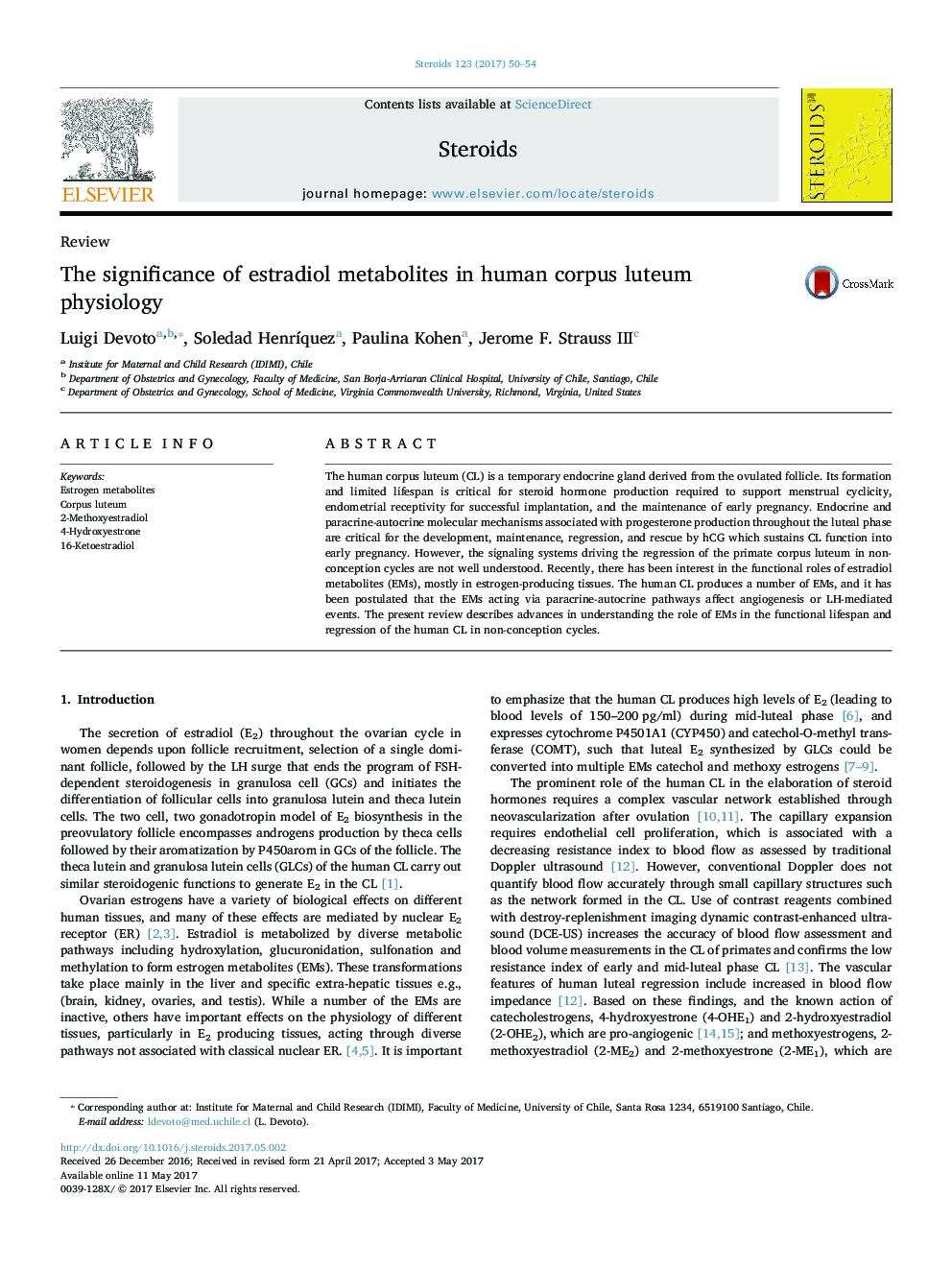| Article ID | Journal | Published Year | Pages | File Type |
|---|---|---|---|---|
| 5516642 | Steroids | 2017 | 5 Pages |
â¢2-ME2 plays a role in luteolysis, 4-OHE1 and 16ketoE2 increase angiogenesis in the development of CL.â¢In a conception cycle, hCG rescues the CL by increasing angiogenesis and diminishes apoptosis.
The human corpus luteum (CL) is a temporary endocrine gland derived from the ovulated follicle. Its formation and limited lifespan is critical for steroid hormone production required to support menstrual cyclicity, endometrial receptivity for successful implantation, and the maintenance of early pregnancy. Endocrine and paracrine-autocrine molecular mechanisms associated with progesterone production throughout the luteal phase are critical for the development, maintenance, regression, and rescue by hCG which sustains CL function into early pregnancy. However, the signaling systems driving the regression of the primate corpus luteum in non-conception cycles are not well understood. Recently, there has been interest in the functional roles of estradiol metabolites (EMs), mostly in estrogen-producing tissues. The human CL produces a number of EMs, and it has been postulated that the EMs acting via paracrine-autocrine pathways affect angiogenesis or LH-mediated events. The present review describes advances in understanding the role of EMs in the functional lifespan and regression of the human CL in non-conception cycles.
